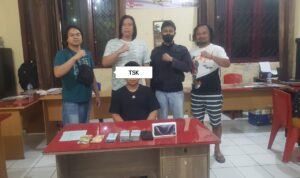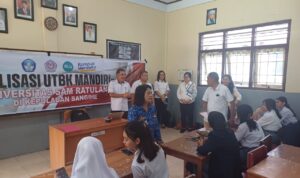Businesses are in the business of making things people want to buy. These things people want to buy are called goods (or outputs). To make these outputs, the firm must start with inputs and process or convert them. The inputs come at a cost, and the conversion of inputs into outputs also incurs a cost. Therefore we want to determine the quantity at the bottom of the U. This will occur when the marginal cost is equal to the average total cost.
Direct labor consists of the fully burdened cost of all labor directly involved in the production of goods. This usually means those people working on production lines or in work cells. Other types of production labor are recorded within the category of factory overhead costs.
- Efficient long run costs are sustained when the combination of outputs that a firm produces results in the desired quantity of the goods at the lowest possible cost.
- Both of these figures are used to evaluate the total expenses of operating a manufacturing business.
- For instance, many businesses spend heavily on packaging, which leads to heavier packages, higher shipping rates, and waste.
- Manufacturing costs are a part of the production costs or the cost of production.
- For example, in a clothing manufacturing facility, the variable costs may include raw materials used in the production process and direct labor costs.
First, sentiment isn’t as bad as the numbers suggest due to partisan skew. Glenk, Holler, and Reichelstein studied the investment expenditures and energy consumption of power-to-gas facilities, which produce hydrogen without emitting greenhouse gases. The research also captured the capacity of power-to-gas facilities commissioned worldwide between 2000 and 2020. Productivity is measured as a ratio of output to the input consumed. Productivity is a measure of effectiveness and efficiency on how a company or economy can transform resources into goods or services. The ∆ symbol known as Delta refers to change, so ∆Q is the change in quantity.
How are production costs calculated?
Additionally, labor costs are incurred for the workers who assemble and test the smartphones. The company also has to factor in costs for maintaining the production facility, including rent, utilities, and equipment depreciation. In economics, the total cost (TC) is the total economic cost of production.
For example, assume that a textile company incurs a production cost of $9 per shirt, and it produced 1,000 units during the last month. The total cost includes the variable cost of $9,000 ($9 x 1,000) and a fixed cost of $1,500 per month, bringing the total cost to $10,500. We can also consider average and marginal costs for average costs as well. The first step when calculating the cost involved in making a product is to determine the fixed costs. The next step is to determine the variable costs incurred in the production process. Then, add the fixed costs and variable costs, and divide the total cost by the number of items produced to get the average cost per unit.
Factors affecting costs of production
This relationship is referred to as the production function. Ultimately, a thorough understanding of production costs empowers organizations to make informed decisions, streamline their operations, and drive sustainable growth. An example of economic cost would be the cost of attending college. The accounting cost includes all charges such as tuition, books, food, housing, and other expenditures. The opportunity cost includes the salary or wage the individual could be earning
if he was employed during his college years instead of being in school. So, the economic cost of college is the accounting cost plus the opportunity cost.
Join PRO or PRO Plus and Get Lifetime Access to Our Premium Materials
In this example, the implicit cost is $125,000, which is the salary he is giving up to start the firm. In this example, Frank is spending $50,000 per year on rent and $35,000 on a law clerk. Production costs are important to understand since they’re connected with generating revenue. When it comes to repetitive tasks common to most business production, automation goes a long way in reducing labor and increasing efficiency. If needed, conduct A/B tests, measure improvement metrics such as production output or saved resources, and reassess any changes regularly.
How does bulk production reduce costs?
A pipe which uses twice as much material to make (as shown by the circumference) can actually carry four times the volume of chemicals because the pipe’s cross-section area rises by a factor of four. What we observe is that the cost increases as the firm produces higher quantities of output. This is pretty intuitive, since producing more output requires greater quantities of inputs, which cost more dollars to acquire. This equation simply indicates that since capital is fixed, the amount of output (e.g. trees cut down per day) depends only on the amount of labor employed (e.g. number of lumberjacks working). We can express this production function numerically as the table below shows. The short run is the period of time during which at least some factors of production are fixed.
What are production costs?
We will learn in this chapter that short run costs are different from long run costs. Understanding how business production costs work is a critical part of any type of company. It’s going to impact everything from the suppliers you use to the type of product or service you produce. wave apps reviews Plus, they’re going to help determine the final price point that you offer your product or service to your customers. Variable costs will have price fluctuations depending on if there are changes in production. If production volume increases, variable costs will also increase.
Or in simple words, the cost of production is the original cost of the product without adding profits of wholesalers, shopkeepers, and other intermediaries. All firms and consumers are so small and powerless that they must take the market price as a given. They have no market power with which to set their own price. Instead, they take the market price and choose only their output quantity. Costs of production relate to the different expenses that a firm faces in producing a good or service. Direct materials consists of those materials consumed as part of the production process, including the cost of normal scrap that occurs as part of the process.
A firm can perform many tasks with a range of combinations of labor and physical capital. For example, a firm can have human beings answering phones and taking messages, or it can invest in an automated voicemail system. A firm can hire file clerks and secretaries to manage a system of paper folders and file cabinets, or it can invest in a computerized record-keeping system that will require fewer employees. A firm can hire workers to push supplies around a factory on rolling carts, it can invest in motorized vehicles, or it can invest in robots that carry materials without a driver. In short, physical capital and labor can often substitute for each other. Re-consider the long-run production function in the previous section.
In the next blog, we will dive deeper and compare the differences between variable and fixed costs and how they affect the total cost. Variable costs change according to the quantity of goods produced; fixed costs are independent of the quantity of goods being produced. In the long run, a firm can vary all factors of production, such as capital and labour. However, as the amount of capital can vary, the firm may experience economies or diseconomies of scale. As productivity (and marginal product) falls, the marginal cost of production will increase.




